Forced to abort their own babies, repeatedly raped, tortured, humiliated, and often left to die. That was the horrifying reality for hundreds of thousands of women and girls who were coerced into sexual slavery by the Japanese army during the Second World War.
The so-called ‘comfort women’ were victims whose voices are still being silenced after 80 years of suffering. As they grow old and die, the memory of all they endured is in danger of being buried along with them. Today, on International Memorial Day for Comfort Women, HERMAN LAU and SHERRY LEE talk to a Hong Kong woman who is fighting to ensure they are not forgotten . . .
In the busy commercial district of Wanchai, people rush along the streets going about their working day. Imposing tower blocks loom over older buildings, like the colonial-style tong lau architecture, in a melding of Hong Kong‘s past and present.
Beneath the glitz and glamour of this bustling modern metropolis lies a dark history in danger of being forgotten forever. The horrifying experiences of hundreds of thousands of women who were forced into sexual slavery by the Japanese army when they occupied the territory during the Second World War. It’s a harrowing story that one woman is striving to keep in the public eye.
On a cool morning, Li Mei-na, known also as Mei Li, the founder of voluntary group Hong Kong History Watch, took a walk down Lockhart Road where many people pass by every day, going about their normal business and leading their ordinary lives. But for those who know Hong Kong history, the familiar street takes on a sinister turn. Li points out it was where the Japanese used to house sex slaves. Today almost all of the buildings from that time have been demolished to make way for office blocks and shopping malls, few locals realise the dark past of Lockhart Road, but Li intends to ensure that people do not forget.
A former advertising executive, Li now devotes her time to preserving the memories of the women who suffered in the Sino-Japanese War. In 2013, she quit her job to voluntarily search for surviving Chinese comfort women as part of her campaign to reconstruct their fading history and remind us of the cruelty of war.
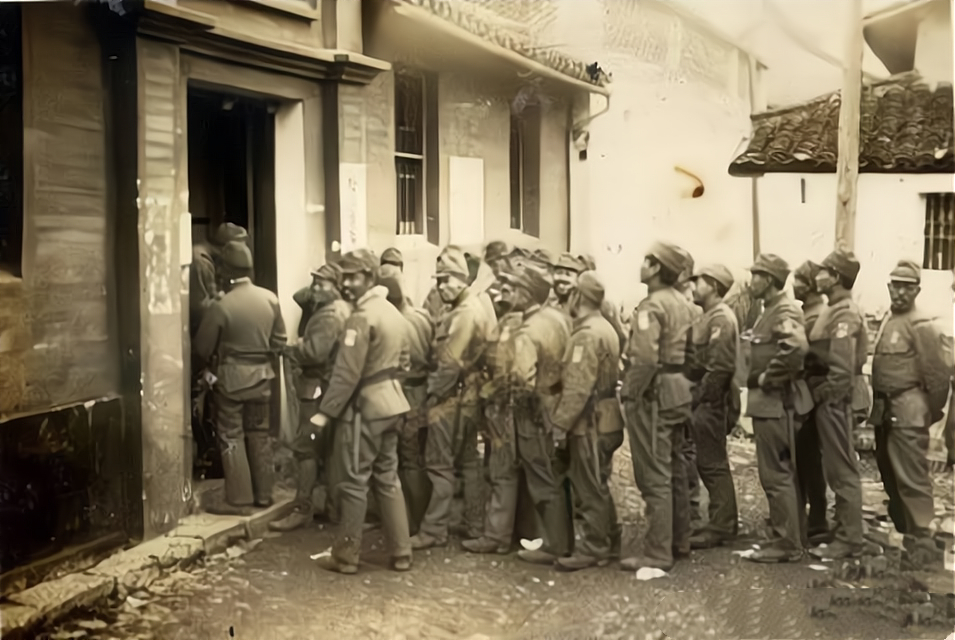
Sex Slaves aged 11
‘Comfort women’ were females forced into sexual slavery with Japanese troops in brothels operated by the army in Asia during the Second World War. The term was translated from the Japanese word ‘ianfu’ (which means comfort). Historical records show that the Japanese believed that forced sex with these women was a good way to recharge the soldier’s energy, and that humiliating females would ‘boost their confidence’ and willingness to fight.
During the Second World War, there were at least 500,000 women forced to become comfort women in locations in China, Taiwan, Korea, Philippines, and Indonesia. Of these, around 300,000 were in China, trapped in premises known as comfort stations, where they would be routinely gang-raped by soldiers.
No woman was safe, neither were girls. Young teens and adolescents were plucked from their homes and taken to the sex camps. The youngest Chinese victim was only 11 years old.
“The Japanese specifically chose girls aged 13 or 14, virgins, to become comfort women,” says Li. “It was because they wanted to minimise the contraction of sexually transmitted diseases.” Li says that the Japanese soldiers systematically raped, sexually abused and tortured the women, “forcing girls to be raped by as many as 50 men in one day”.
As well as enduring the physical and emotional pain of multiple raping, the women were tortured and many were left infertile and disabled. Even after the war ended, their suffering continued: not only did many experience psychological trauma, they also had to cope with discrimination and life-long poverty.
Since 1991, surviving comfort women across China, Korea and the Philippines have been fighting in Tokyo’s courts for compensation and an apology from the Japanese government. So far, neither has been forthcoming and the horrendous war crimes committed against these women will be forgotten after they are dead.
“I guess there are about 10 of these women still alive today in China,” says Li as she wanders the teeming streets of Wan Chai. A wave of despair washes over her face as she reflects on the small fraction of women still alive and able to recount the atrocities committed against them.
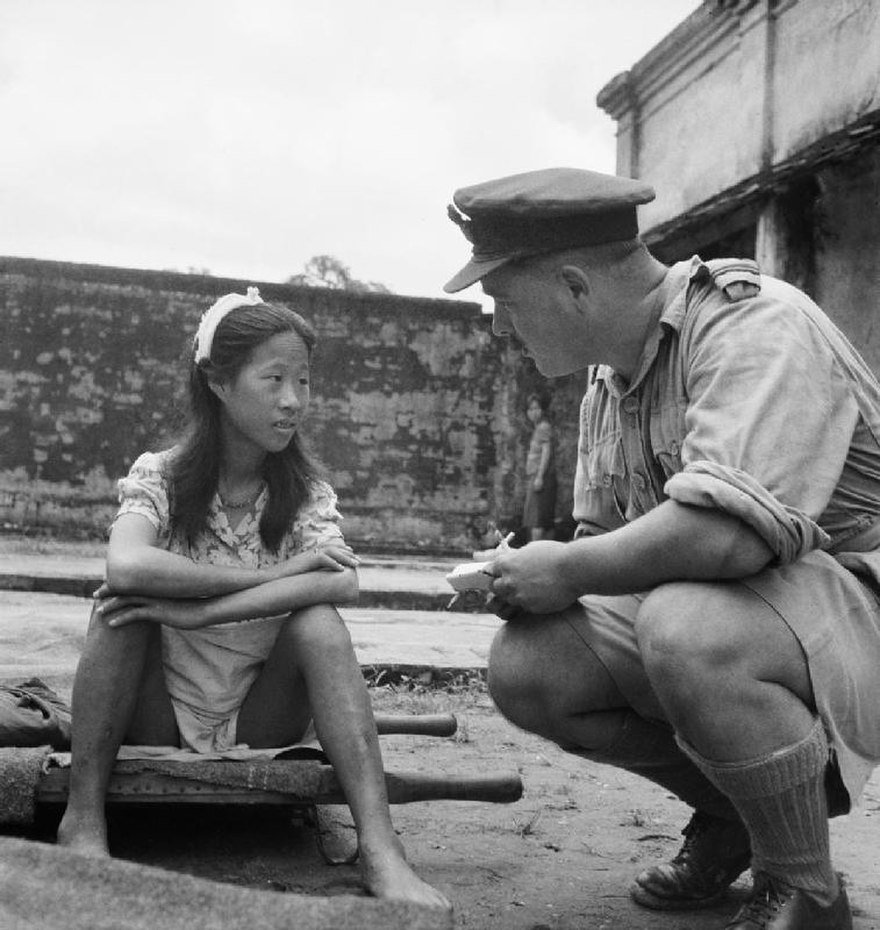
Remembering their Suffering
Li seems to be a lone figure here in the attempt to gain recognition for the plight of these women. In 2016, she wrote to the Chief Executive’s Office in Hong Kong, requesting the story be incorporated in the teaching of recent Chinese history at the Hong Kong Museum of History and in schools. She also suggested the construction of a comfort women statue in Victoria Park.
“The government only sent me a reply saying they had received my letter and had forwarded my requests to the respective departments to follow up, but no progress has been made since,” sighs Li.
Li has also suggested the conservation of a known former military brothel during the Japanese occupation of Hong Kong between 1941 and 1945, a red-brick bungalow in Wanchai’s Ship Street next to the Hopewell Centre, which is to be demolished for redevelopment. She has written to the developer Hopewell Holding requesting the premises be turned into a museum to illustrate the history of comfort women, but has received no reply.
Despite the lack of response, the comfort women activist refuses to back down. She continues her lone quest to educate the Hong Kong public about Chinese comfort women and the suffering inflicted on them during Japan’s invasion of China in the Second World War between 1937 and 1945, via the media and lectures. A mission she was inspired to begin in the early Nineties.
Compelled to Help
Li was studying journalism at Zhuhai College in 1992 when students were, as part of their school assignment, taken to a protest in which a group of elderly people recalled their memories of Japan’s invasion. She was shocked by the stories they told. Around the same time she saw a television broadcast about comfort women on the mainland. She recalls how horrified she was when one woman revealed a deep scar across her abdomen, saying: “In order to prevent me getting pregnant, the Japanese army cut out my uterus”.

Li was moved and felt compelled to do something to help but wasn’t sure how to go about it. She carried on with her life and, after graduation, joined the advertising industry and worked her way up to executive level. But she never forgot about the comfort women. Then in 2012, she volunteered for a historical group, during which a TV reporter asked her whether she knew the history about comfort women. It was just the prompt she needed. She once again felt the urge to help the survivors and honour the memory of the many victims who had passed away.
She started saving money to finance her mission in China, but it was only in 2013 when she decided to fully commit to her plan, after learning about the death of Wan Ai-hua, the first ever Chinese comfort woman to publicly admit her identity. She saw the television broadcast of Wan’s last words not long before she passed away: I don’t want to die in vain, I want to be a testimony of what happened. “I realised that the comfort women were dying and I had promised myself to help them all those years ago, yet I had done nothing which I regretted,” says Li.
Li quit her job and focused all her energy into furthering the cause of the Chinese comfort women. Her goal was to visit them to offer one-to-one counseling, record their stories, and become a voice for them. “I wanted to spread their stories,” she says, who founded a voluntary group, Hong Kong History Watch, to carry out her work on comfort women.
Searching for Survivors
She set about the daunting task of seeking out the women who, due to immense social prejudice and shame, understandably hid their identity. There was one brave Korean woman who had come forward on August 14, 1991. Late Kim Hak-sun was the first woman in the world to go public about her sufferings as a comfort woman for the Japanese military after 40 years of silence. She filed a class-action lawsuit against the Japanese government for the damages inflicted during the war. Her courage sparked China’s search for survivors.
The first Chinese comfort woman to come forward was Hou Dong-e in Shanxi. She was discovered by Zhang Shuangbing, a mainland primary school teacher who dedicated his spare time to helping comfort women. Hou was caught by the Japanese in 1941 and trapped in a fortress on a hilltop which the Japanese built and turned into a comfort house. She told of how she was once gang-raped there by more than 50 Japanese soldiers. Hou was left infertile, her husband abandoned her, and she was discriminated against and humiliated by people in her village. Forever known as “the woman from the fortress”.
“People in the village told Zhang that there was a woman working in the field and she was always unhappy. It was 1982. He went to see Hou but she did not say a word. Later, in 1992, he showed her the newspaper report about the lawsuit filed by Korean comfort women, and she burst out crying,” Li says.
Hou told the teacher the whereabouts of six comfort women trapped together with her in the comfort house. In 1995, Zhang led 16 comfort women to Japan to co-file a lawsuit against Japan for the wartime rape and sexual enslavement.
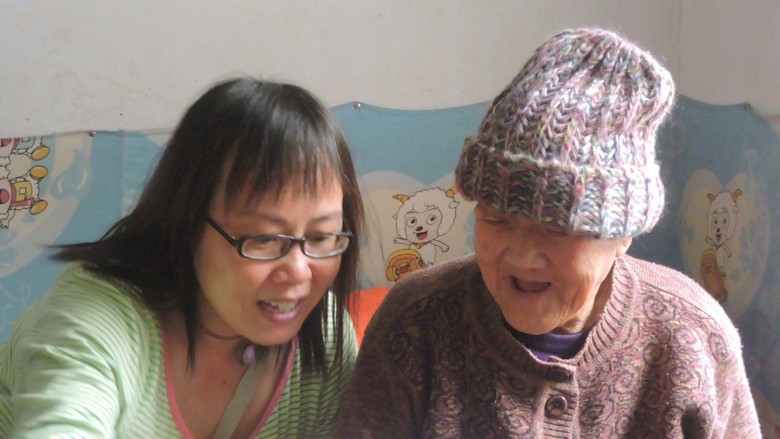
Since the start of her search for survivors in 2014, Li has visited almost 30 comfort women in China and have shared their experiences to students in Hong Kong.
A Lifetime of Pain
It took Li several months of intensive investigation to locate some of the former comfort women still living in China. Then in the year from May 2014, she met 22 of them in Shanxi and Hainan. “After I almost finished the final trip, a volunteer asked me if I wanted to visit one woman who was in a comfort house for only two months. I agreed and when I met the woman she was speechless and I could feel her pain,” recalls Li. There were others like her who stayed in Japanese military brothels for a short period and were not given any help, provoking Li to help them. “They sobbed so much.”
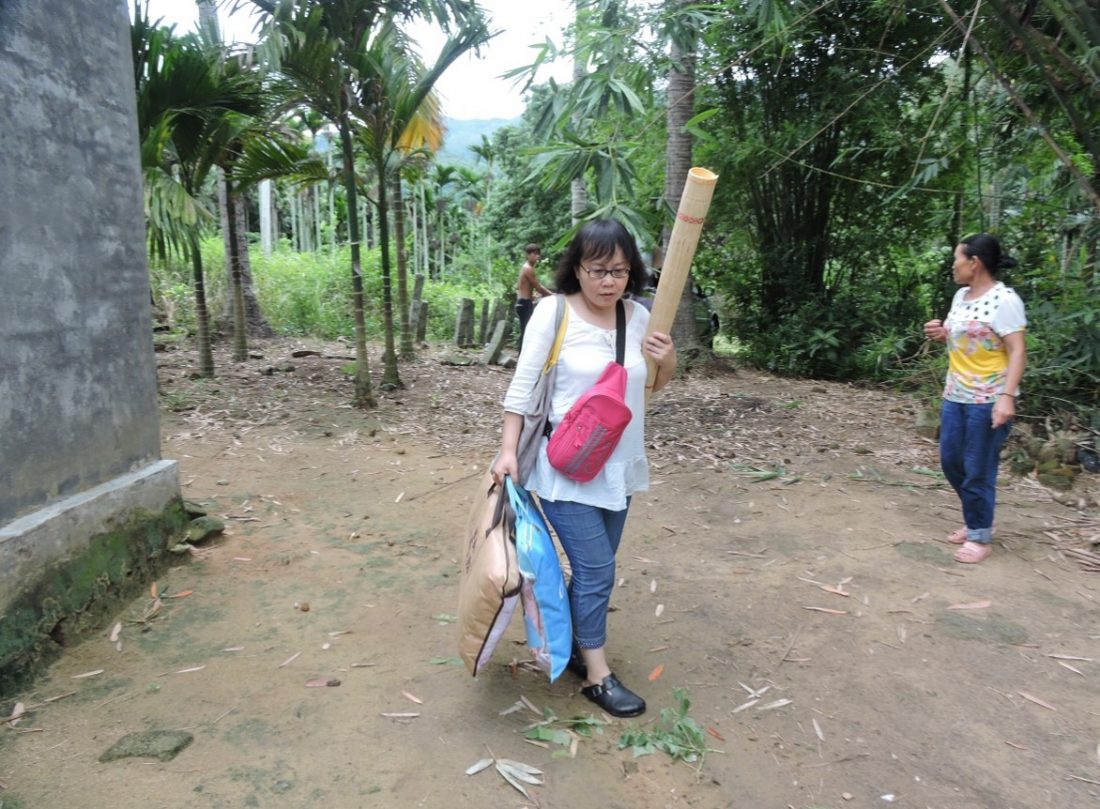
Li has recruited mainland volunteers to help her search for survivors and it has not been easy. “The sheer size of the mainland makes it difficult to search. As the volunteers pass away, the records they have will be lost.”
So far, Li has visited almost 30 comfort women in Shanxi, Guangxi and Hainan. She also found four women in Hong Kong. One was a lady in Fanling who had long passed away when her case was reported to Li, another apparently lives in Cheung Chau but Li has been unable to locate her. Then there are the twin sisters who were repeatedly raped by the Japanese in their own home during the war. “We did not meet, but their relatives told me their story,” says Li.
Li weeps every time she talks about the women she met and recalls the pain they suffered. She describes what happened when women attempted to resist the attacks, “The Japanese would have their vaginas electrocuted, or had their families beaten in front of them until they finally submitted themselves to be raped”
Another woman, Cao Hei-mao (曹黑毛) from Shanxi province told Li that “she had to perform abortion on herself after realising she was pregnant, being forced to do so or else the Japanese would have killed her as well”. She remembers vividly the moment she saw comfort woman Zheng Ya-hong (鄭亞洪) at her home in Hainan in 2016. “She fell to the floor crying the words ‘save me, help me’.” Li believes that she was of some help to the woman, “it was my simple act of being present that gave her validation that her past suffering was finally recognised” Not long after Li’s visit, both Cao and Zheng died.
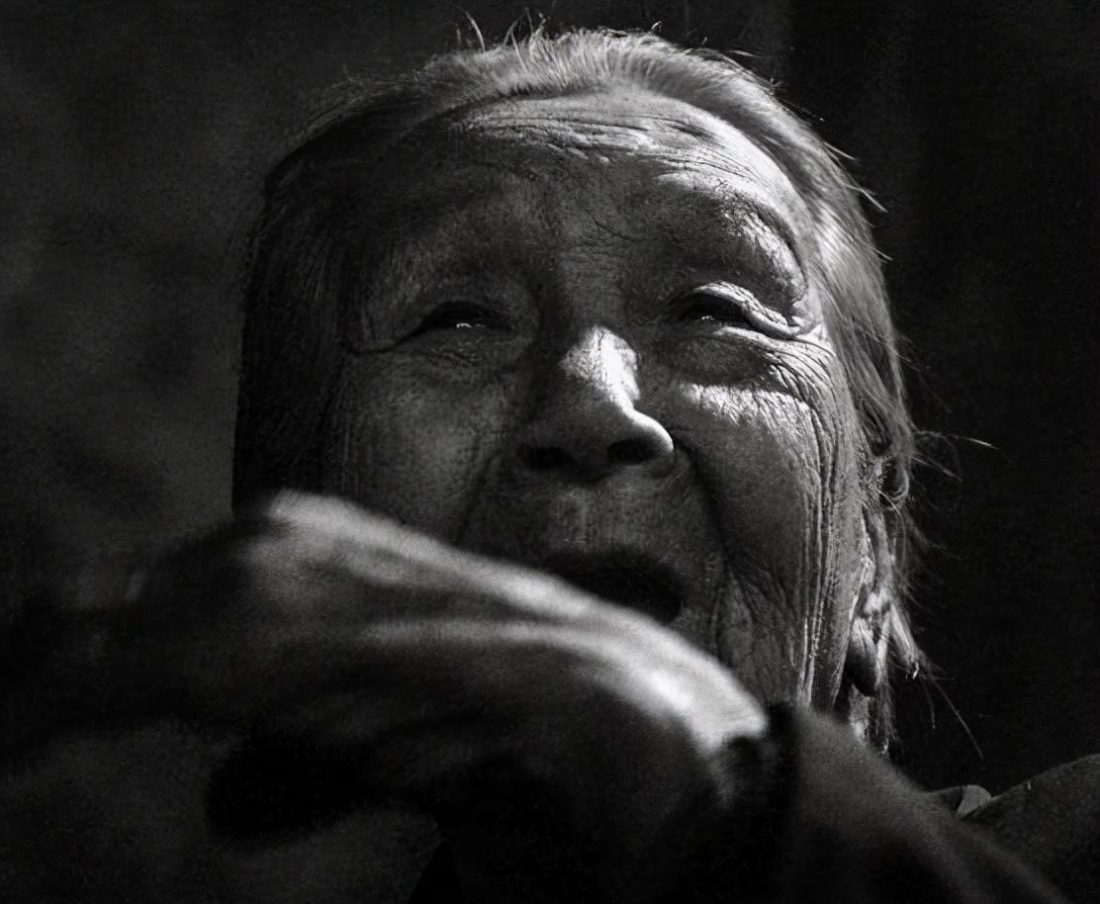
The war ended in 1945 as Japan surrendered, but that did not end the women’s agony. They bore the psychological trauma of their experiences as well as the physical disabilities inflicted on them, and as a consequence, many were unable to work and existed in extreme poverty, relying on the charity of volunteers who visit them from time to time to “give them some pocket money,” says Li. They would often be ostracised by their communities and even their own families. “Other people would call them traitors and prostitutes. Sometimes they had to leave their village and move to another one, changing their names.”
Despite their experiences, Li says the women she met and continues to meet are not looking for reparation or revenge, only recognition for their suffering. Even with her basic counselling skills she learned from a course, she believes she has been of some help to them. “I never ask them for more information on their past than they are willing to give,” Li says. “Oftentimes, they are unable to speak of their past so we sit there in silence”. Most of them cry. “I will sit beside them and hug them,” says Li. “I will never cry in front of them. I do that when I am alone, when I go home”.
Fight for Remembrance
In the fight for remembrance, Li gives talks about the experiences of the comfort women at the Chinese University of Hong Kong, Hong Kong Baptist University, and other education establishments. “Our schools do not talk enough about the sufferings of war . . .I want our youth to have a wider perspective on history,” she says.
Li also hopes to begin a project working in collaboration with Korean and Chinese comfort women campaigners to request recognition by the United Nations for the history of comfort women. “We hope that the UN will keep the history of comfort women in the Memory of the World Register,” she says, adding that the recognition will raise global awareness of the history of comfort women, and war crimes. For the same reason, Li urges the Hong Kong government to incorporate the history of comfort women in Hong Kong Museum of History and into the curriculum of secondary schools.
Though comfort women from different Asian countries have filed lawsuits against Japan, all were ruled against by the Japanese court. Despite repeated attempts to testify in the Tokyo courts since 1996, the Chinese women lost their lawsuit in 2007. Though the Supreme Court of Japan accepted the reality of Chinese comfort women being forced into sexual slavery, it said that in the 1972 China-Japanese Joint Statement, the Chinese government had given up the right to collect damages from the war, thus victims were ruled against. But, Li says, Chinese activists will continue their legal battle if they find new cases for lawsuits, and because the victims are dying, the chance has become dim.
Li criticised Japan for denying their well-known war crimes of imposing sexual slavery across Asia, pointing out that Tokyo keeps pressuring countries not to voice out for comfort women. “Different countries set up comfort women statues and Japan would pressure the countries to take them down, including those in South Korea, Shanghai and Australia,” she says.
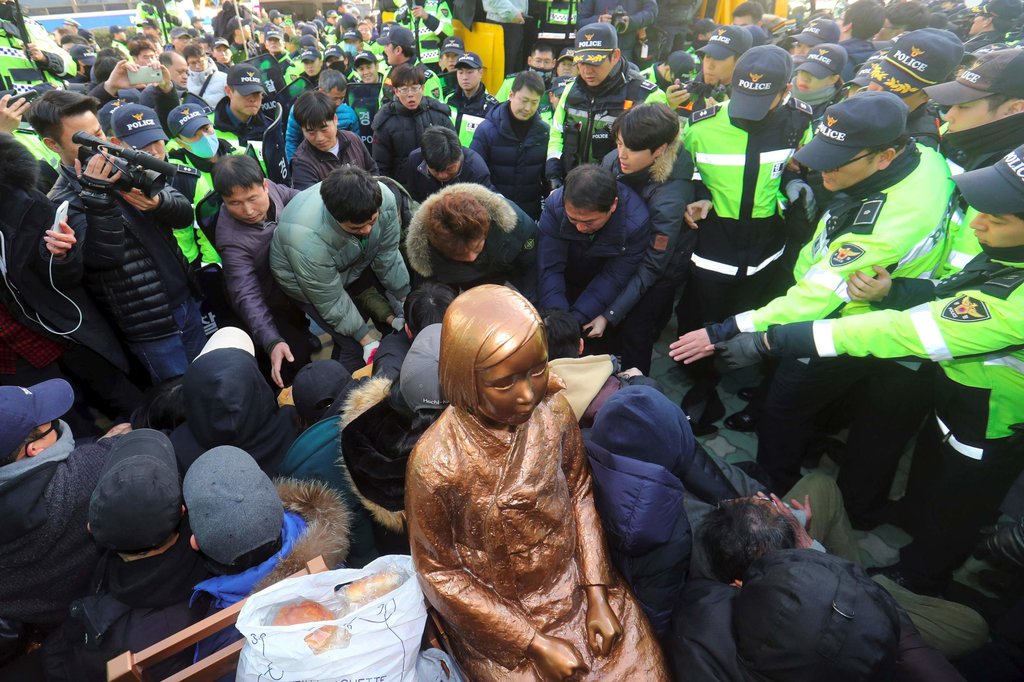
The activist says that there are about 50 comfort women left in the world, including one from Taiwan, 14 from Korea and 10 to 12 from China. “All the Chinese comfort women who sued Japan had already passed away, and when all comfort women die, there will be no one left to fight for justice,” Li says.
Mei Li, however, has not given up hope. She states that even if all the comfort women passed away, Japan must face its wrongdoings – to openly admit its brutal war atrocities, apologize, and reflect, “All countries that initiated war should learn from this”.
“The world should not forget comfort women,” she says. “Only through this may people truly understand the extent of tragedy in war, and prevent it from happening again.”
Articles Related: